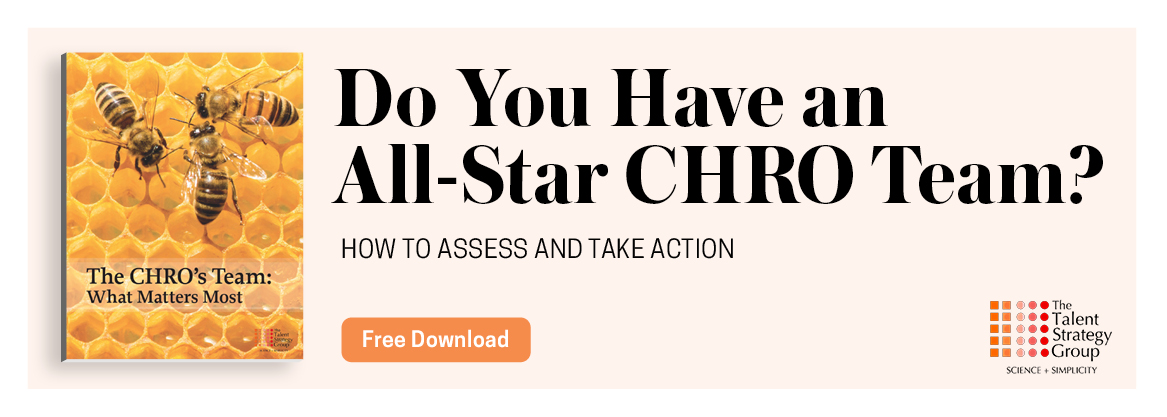You have too many filters blocking great employees from breaking into your organization. It’s time for some maintenance and repair.
By Beverly Kaye, Connie Bentley, and Linda Rogers
By 2030, the global worker shortage could reach 85.2 million people. In the U.S. alone, in the one-month period from June to July 2018, the number of jobs with no people to fill them rose by 117,000, to 6.94 million.
American businesses big and small increasingly have the same problem: They can’t find people. So where are all these missing persons, and why isn’t law enforcement looking for them? Because that’s your job.
Sign up for the monthly TalentQ Newsletter, an essential roundup of news and insights that will help you make critical talent decisions.
Don’t take it personally—we’re just the messengers. But if you’re a recruiter, screener, interviewer, hiring manager, or anyone else involved in talent acquisition, you’re probably spending far too much time in the search for these missing persons.
The good news? You don’t have to find all of them.
The bad news? You do have to find the right ones, which takes more time.
You don’t have to address the entire workforce dynamic, much less transform it. You simply need to understand and quickly adapt to your workforce situation. Which brings us to the question …
What’s Your Workforce Situation?
When faced with a drought, it’s a good idea to ask why the problem is occurring. Even though some would say, “Duh! It’s because we don’t have enough water,” more enlightened observers might argue that understanding land and water temperatures, weather patterns, and soil moisture levels will help focus on the real causes, thereby positively affecting the outcome.
Likewise, as an enlightened observer of the current talent drought, you might tackle it by first identifying the possible causes for your drought.
There are three commonly acknowledged causes for any problem: physical, human, and organizational.
One physical cause of a drought is an increase in evaporation, leading to less water and higher demand. How many people have evaporated from your organization, or are about to?
One human cause of a drought is that no one anticipated it. We can probably all agree that a talent shortage shouldn’t elicit a startle reflex, but how many signs of the current shortage did you see coming, and how did you act on them?
One organizational cause of a drought is that the existing process of water collection, filtration, storage, and utilization is invalid in the current situation. How confident are you in your current process of employee acquisition, retention, and utilization?
Ironically, there’s no shortage of explanations for the talent shortage:
- Baby Boomers have been retiring, while birthrates have been declining
- Increasingly complex skill sets are necessary to operate in today’s automated environment
- The government is restricting worker “imports”
- People are leaving jobs because of growing confidence in employment prospects
- Demand has been miscalculated
- People don’t feel engaged
- Recruitment systems aren’t working as well as in the past
And the list goes on. But how relevant are these explanations to your situation? More to the point, is a key cause of your talent shortage missing from this list?
Is the Fault in Your Filters?
Let’s get real: Talent isn’t trying to conceal itself. It just goes unnoticed in settings that mask its presence through filters like faulty assumptions or limiting beliefs.
In the talent selection process, filtering—more often called “screening”—is ideally intended to quickly and efficiently weed out candidates who don’t meet basic, valid, well thought-out selection criteria, like organizational values, culture fit, ability to interact effectively with others, and short- and long-term potential. These are examples of conscious filters—some of which, by the way, may not meet their own criteria for “valid” and “well thought-out.”
Unconscious filters, on the other hand, explain why some women won’t date bald men, why some people only hang out with those who look and act just like themselves, and why hiring managers, recruiters, screeners, interviewers, and others routinely weed out candidates who don’t meet their own faulty filter criteria.
These practices generally result from habit, conditioning, fears, stereotypes, conventional thinking, or insecurities that negatively shape the way people perceive the world around them. And both conscious and unconscious filters are operating freely in talent management.
To test this theory, consider just a few examples of conscious and unconscious filters that could be trapping perfectly good talent from getting through to your organization.
Answer yes or no to the following.
| STATEMENT | Y/N |
| 1) I have filtered out candidates because they: | |
| Were too old for the position or for our culture | |
| Didn’t have a degree | |
| Were overqualified | |
| Lacked experience in our industry | |
| Would be too difficult or expensive to re-skill | |
| Had a gap in their employment history | |
| 2) I am highly confident that our recruiting and hiring process enables us to consistently and quickly access the highest possible number of potentially qualified job candidates |
This is not a test, but if you answered “yes” to any part of statement #1, the only correct answer to #2 is “no.” Why? Because if you’re using any of these or other restricting filters, you can’t possibly be consistently and quickly accessing the highest possible number of appropriate job candidates.
In fact, you could be eliminating as many as six candidate groups that might very well contain just the talent you’re looking for.
Enough Qualified or Qualified Enough?
If you’ve ever worked for a sales or marketing organization, you’re familiar with a tried-and-true tool called the lead generation funnel. It’s a graphic depiction of the process of stimulating interest and evaluating inquiries from the highest potential customers, then contacting them, qualifying them, negotiating with them, presenting a proposal, and closing the sale.
There are three basic things we know about these funnels—and by extension talent shortages:
- Generally speaking, the more qualified prospects who enter the funnel, the more likely it is that buyers will emerge at the bottom.
- Conversely, qualified prospects who never enter the funnel are precluded from emerging at all. (We think this has something to do with physics.)
- No competent sales or marketing professional would ever consciously or unconsciously restrict exposure to any of these top tier prospects.
This dynamic might be summarized by this idiom: Nothing in, nothing out.
You might be familiar with “garbage in, garbage out.” It was coined by an early IBM programmer as a simple way of pointing out that a computer can only process what it’s given. In other words, utilizing insufficient, inferior, or incorrect materials, information, or instructions at the beginning of a process will yield insufficient, inferior, or incorrect results at the end of the process.
It sounds simple, doesn’t it? That’s because it is. Do the math: How many qualifiedover-50, degree-less, overqualified, other-industry, too-hard-to-reskill or employment gap candidates are missing at the end of your talent funnel because they’re being filtered out at the beginning?
While you’re at it, add another group to that list. Call them The Great Untouched. These are the literally countless individuals who might very well be qualified, but are “self-disqualifying” based on your published job requirements. It’s a little like a department store charging for admission and then wondering why the aisles are empty.
What You’re Missing—Literally
So let’s take a quick look at just some of the talent you might be missing by overfiltering or overcharging job candidates.
| QUALIFICATION FILTER | WHAT YOU’RE MISSING |
| 0ver-50 | A whole generation of people who are more optimistic and open to change than the prior generation, and among the first to prioritize work over personal life. |
| Degree-less | Smart, competent, industrious people for whom the classroom is not a good learning environment, but who have actual on-the-job experience, unlike some recent graduates who have never worked at all. |
| Overqualified | Those who could probably do the job well from day one— and might not even demand the high salary their qualifications merit. |
| Other-industry | A whole world of high-performing or high-potential employees with demonstrated success in an industry that, in more ways than you know, is very much like your own. If you were a hiring manager with a commercial transport company, would you toss Bill Gates’ management résumé because he has no experience in trucking? (Never mind the compensation issue.) |
| Would need to be re-skilled | Current employees who are already onboarded, familiar with your industry and culture, productive, and would probably not ask for a signing bonus. |
| Gap in employment history | People who have done other things for a while (like raise children) and are excited to get back to work, motivated to learn, and mature enough to know where they bring value. |
We all know recruiting is no longer a commodity game. Job training, apprenticeship programs, and other stop-gap tactics might help, but too many employers are hesitant to take on those costs. So they too often opt for maintaining the status quo and enduring its less obvious costs:
- Paying higher salaries for unnecessary credentials
- Overlooking “overqualified” but key talent
- Favoring young talent that statistically will escape in 3.5 years over more seasoned talent whose average job lifespan is twice as long
- Missing out on the innovation and freshness that other-industry experience could bring to the organization
- Eliminating candidates who can’t pass through your faulty filters, and often result in what we mistakenly label a talent shortage.
As any home repairman will tell you, a filter left in place too long will eventually keep even the good stuff from getting through. The remedy is to check them periodically for blockage and, when necessary, replace them.
So take some time to brainstorm about any filters you may have kept in place too long, remove the ones that are blocking the good stuff from getting through, and exchange them for cleaner, more functional ones.

Beverly Kaye is recognized internationally as one of the most knowledgeable and practical professionals in the areas of career development, employee engagement, and retention. In 2018, she received the Lifetime Achievement Award from The Association for Talent Development (ATD) and the Thought Leader Award from The Association of Learning Providers (ISA). Beverly’s books include Love ’Em or Lose ’Em, Help Them Grow or Watch Them Go, Hello Stay Interviews, Goodbye Talent Lossand Up is Not the Only Way.
Connie Bentley is an executive with deep experience in the talent development space. As a practitioner and executive in leading learning and development organizations, she served as CEO, president, COO, general manager, and practice leader. Through those roles she gained rich insights into the wonders and terrors of all aspects of leadership. As principal of CMB Consulting, Connie is a coach and business advisor to executives.
Linda Rogers is an internal communications and training consultant who focuses on helping managers and executives communicate change and motivate, engage, inform and educate employees. Her client list includes Hewlett-Packard, Cisco Systems, Genentech, Safeway, Blue Shield, Stanford Medical Center, Times Mirror and others.


